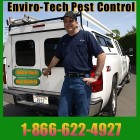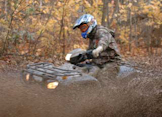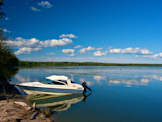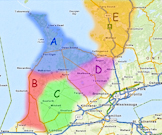PEST CONTROL & EXTERMINATION SERVICES FOR;
INDUSTRIAL~ COMMERCIAL ~ RESIDENTIAL
CLUSTER FLIES ~ JAPANESE BEETLES ~ EARWIGS ~ SPIDERS ~ WASPS ~ CARPENTER ANTS ~ FLEAS ~ TICKS ~ WOOD ROACHES ~ BED BUGS ~ MOTHS ~ BOX ELDER BUGS ~ MICE ~ RATS ~ BATS
AND MORE...
GOVERNMENT LICENSED AND INSURED. CERTIFIED BY THE MINISTRY OF ENVIRONMENT, W.S.I.B. COVERAGE
Pest Control - Ants
- Award-winning service.
- Competitive prices.
- Unparalleled reliability.
These are the qualities we bring to our customers
--guaranteed
Hard To Reach Locations
Island Service
SAVE UP TO 20% ON YOUR NEXT SERVICE CALL WHEN YOU REFER A FRIEND!
SENIORS DISCOUNT!
BIG SAVINGS WITH OUR DISCOUNT PROGRAMS!
Ants
EnviroTech Pest Control has a highly successful Ant Program. This Summer Service Program will prevent ants from entering your home, giving you a pest free environment.
Ants are social insects and colonies may consist of up to 300,000 ants. The ants need to protect their nest and community from enemies. Some ants bite with their jaws or sting and may spray a burning fluid into the wound. Ant colonies have three distinct orders; the queen, workers and males. The queen is the largest ant in the nest. The queen hatches with wings. When a female has been fertilized she becomes the queen of the colony. Only the queen can lay eggs. She lives in the centre of the nest and there may be several in one nest.
The worker ants are female and have no wings. The worker ants feed and guard the queen, take care of the young, collect food, clean and guard the nest and dig new tunnels. The male ants do not work. The male ants have wings but they are smaller than the queen. When winged ants swarm in the air, the male and female ants mate. The males usually die after they have mated. The female ant then tears off her wings and starts to look for somewhere to build a new nest. When ants inhabit areas in or near the home they can be a nuisance or destructive pest.
Carpenter Ants; The adult carpenter ant measures one-half inch long. They are predominantly black, grayish-black or brown. They nest in moist wood. In a building this is often a sign of a moisture problem. In natural areas, the ants nest in logs, stumps or dead trees. In constructed areas, they nest in wooden posts, beams, walls and joists. They tunnel through the rotting wood leaving honeycombed galleries. Carpenter ants do not actually eat wood. The sawdust like remains caused by chewing the wood is called “frass” and is a sign that these ants are nesting close by. The nesting habits of these ants can cause major structural damage to homes.
Field Ants; The field ant is about one-quarter inch long. They are brownish-black in color, but they show considerable variation from one species to the next. This name is used for a large group of ants commonly found nesting in fields, meadows and lawns. Field ants are probably our most commonly observed ant. Field ants nest in the soil in moderately large colonies. They do not normally nest indoors but the workers frequently forage indoors for food and create an annoyance by their presence.
Pharaoh Ants; The pharaoh ant is very tiny, approximately one-eight inch long. They are light yellow to a reddish color. They cannot survive outdoors year-round. They are often found in dwellings, bakeries and restaurants. Colonies may be found outdoors in the lawn or garden areas. Indoors they can be found in-between walls, sub-floor, attics, cracks, crevices, behind wainscoting, baseboards, plaster, or mantles, and between flooring. Colonies have several queens. One of the smallest ant species, pharaoh ants are difficult to control because their large colonies divide at the slightest disturbance.
Ant Colonies established in a home can be a problem all year long, especially carpenter ants as they cause structural wood damage. Ants living outdoors can be a nuisance in late spring to the fall. The “key” to eliminating nuisance ants is to kill the queen(s) to cease the life cycle and ultimately destroy the nest. There are a variety of safe and environmentally friendly methods to rid you of these pests. The type of intervention depends on the type of ant and the nest location. Nests may be in ground, under stone slaps or patios, under wood piles, in stumps or in your home. These different nests require different approaches.

Think Green!

Common Pest Page Links:
Enviro-Tech Pest Control inc © 2011 ~ All Rights Reserved
Disclaimer - EnviroTech Pest Control has made extra efforts to ensure all information is as accurate as possible on this website. EnviroTech Pest Control is not responsible for the use or misuse of any products or information contained herein. ~ 48 hr no refund on deposit on cancelled services SHIPPING POLICIES ~ DISCLAIMERS & POLICIES










